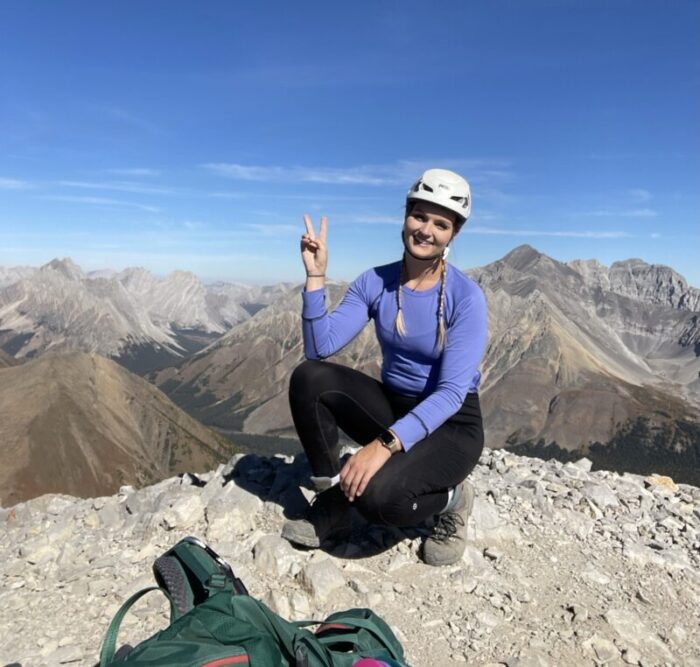Base layers are usually not necessary in the summer.
Some base layers are meant for summer, as they are short-sleeved, lightweight, and meant to wick sweat off your body and dissipate it throughout the base layer item. These will help keep you cool and comfortable in warm weather.
Wearing lightweight base layers in the summer is an excellent way to keep your body comfortable and dry.
Other base layers are heavier, and are meant to wick sweat away and decrease heat loss to the environment. These base layers are meant to keep you warm and dry in cool weather.
Therefore, wearing these heavyweight base layers in the summer will make you sweaty and uncomfortable.
Choosing the appropriate base layer is important to have the best experience for your activities!

Do I Actually Need A Base Layer?
You never need a base layer for outdoor activities, but base layers do play an important roll in keeping you comfortable and dry during vigorous exercise.
I’d recommend wearing a base layer in any weather, but choosing the appropriate kind of base layer matters.
Base Layers in the Summer
In the summer, it might not make sense to wear a base layer if you’ve only ever known base layers as “thermals” or “long underwear”.
However, there are base layers that are made specifically for summer weather.
Summer base layers are lightweight and aim to pull sweat off your body to keep you comfortable. They can be short or long-sleeved to suit your preference. Base layers in the form of underwear also exist, and are an excellent option for individuals looking to stay cool and comfortable in warm weather.
If you want to be comfortable and dry in the summer, I would recommend wearing a lightweight base layer (look for numbers under 180).

Long Sleeves vs Short Sleeves
Lightweight base layer tops come in a variety of styles – one of the most debated is the length of sleeves for wearing base layers in the summer.
| Pros | Cons | |
| Short Sleeves | More air flow Might feel cooler Lighter due to less material Can feel less restrictive | Arms exposed to sunlight Might feel too cool in windy weather |
| Long Sleeves | Sun protection for the arms Can wick sweat off your arms Keeps you warmer in windy weather | Can feel warmer in hot weather Can feel more restrictive Heavier due to more material |
I personally prefer short-sleeved base layers in the summer as I’m not overly prone to sunburns. I will then carry a wind layer in my pack as I hike. Sometimes when it’s really warm I will even just hike in a base layer sports bra for maximum comfort.
However, exercising in a long-sleeved lightweight base layer is a completely valid option, and the choice might just come down to personal preference.
Base Layers in the Winter
In the wintertime, base layers are an important component of a layering system. By wicking sweat away and lying right next to the skin, it helps prevent heat loss, thereby keeping you warmer for longer.
I would argue that in the winter, although base layers aren’t absolutely necessary, they are extremely beneficial. Look for mid- to heavyweight options with numbers above 240 (higher numbers mean warmer clothing).
For more tips on base layers in the winter, check out my article on base layers vs. thermals!
What Kind of Base Layer Should I Choose in the Summer?

Layer Options
Underwear
I recommend wearing base layer underwear in the summer (and winter!) to wick sweat away from your genital areas during vigorous exercise, regardless of what you choose to wear on top of your underwear.
During the warmest summer days, I often prefer to hike in just a base layer sports bra on top. This keeps me cool and comfortable the longest.
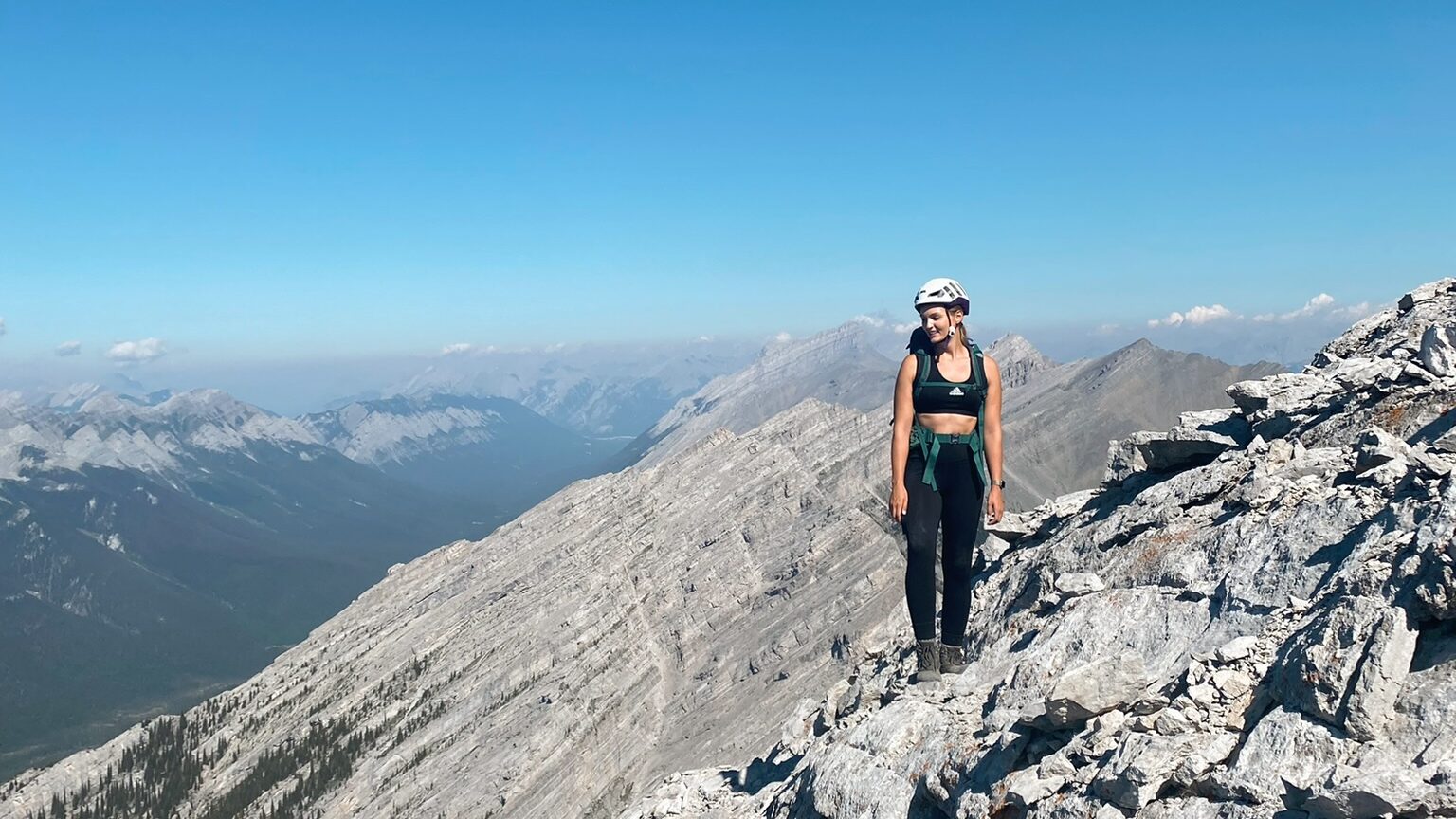
Tops
In the summer, I recommend wearing a lightweight short-sleeved base layer. This will wick sweat away from your body keeping you dry and comfortable. Short sleeves also leave your arms exposed for some air circulation. If you’re prone to sunburns, consider a long-sleeved lightweight base layer top.
Base layer tops are particularly important if you’re expecting changing weather. For example, hiking up into the alpine, the weather is often cooler at a mountain summit. Having your sweat wicked off your body prevents your from cooling down excessively during temperature decreases or windy conditions.
Choosing to forego a base layer top is also a valid option in warm weather. Base layer fabrics can be more expensive, and it might be easier to nix the expensive base layers than to find a couple pairs that you can interchange for your activities..
If you don’t want to wear a base layer top, your regular workout attire will likely do just fine. Be aware that cotton-based fabrics do not wick sweat away or dry quickly, leaving you wet and chilly. However, when the weather is excessively warm, you might prefer these attributes of cotton fabric anyway.
You also can choose to forego any top in warm weather, depending on personal preference. Consider packing layers if you’re expecting the weather to change.
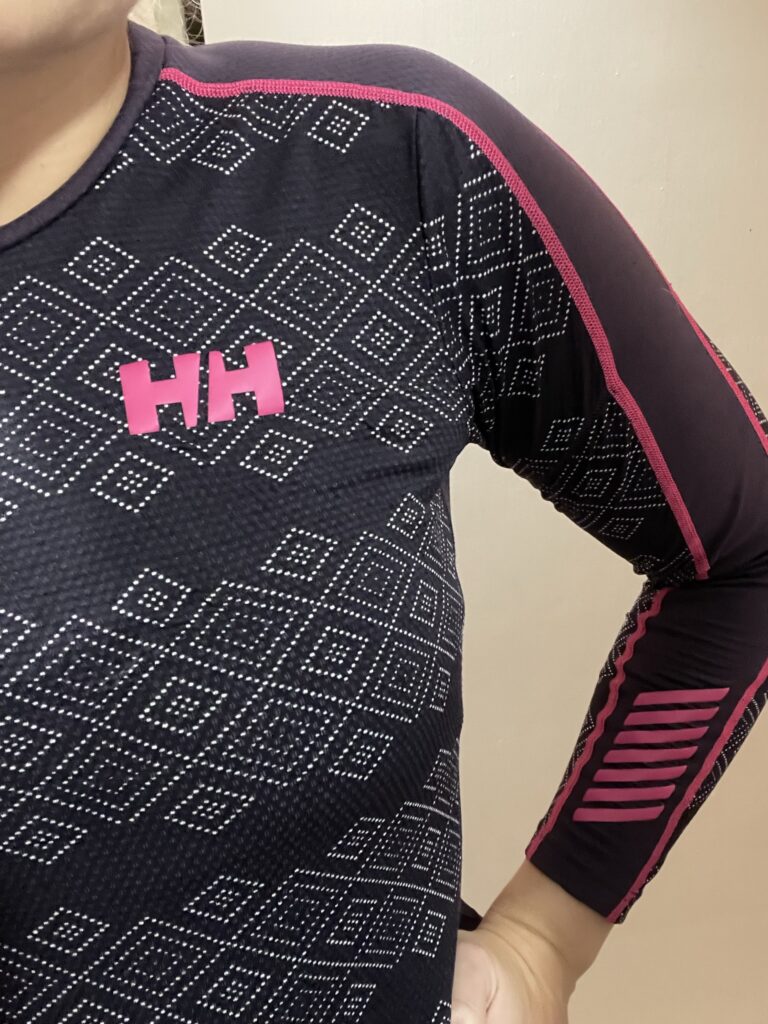
Socks
Base layer socks are also an excellent option in all weather conditions, as they will pull moisture away from your feet and decrease the chance of blisters. Base layers are also known to reduce odor, which is very beneficial when it comes to feet and footwear.
Check out my post on hiking socks vs regular socks for more information!
Bottoms
I would not personally recommend wearing base layer pants in the summer because they are usually see-through. This makes it difficult to utilize them as the only layer on your legs.
The benefit of wearing a base layer pant is that it provides sun protection to your legs while decreasing chafing or irritation that is caused from skin-on-skin rubbing. If either of these problems pertain to you, consider wearing a lightweight base layer pant in the summer with a loose or comfortable short on top.
Weight
The difference between summer base layers and winter base layers is the weight of the fabric.
Look for base layers labeled “lightweight”, “ultralight”, or “featherweight”. These base layers might also be associated with numbers that correspond to their weights. The numbers should be below 180 – this indicates a lighter fabric.
I recommend the icebreaker short-sleeved 150. Find it here.
Midweight fabrics (200-280) are intended for cooler weather, and heavyweight fabrics (>300) are meant for cold weather.
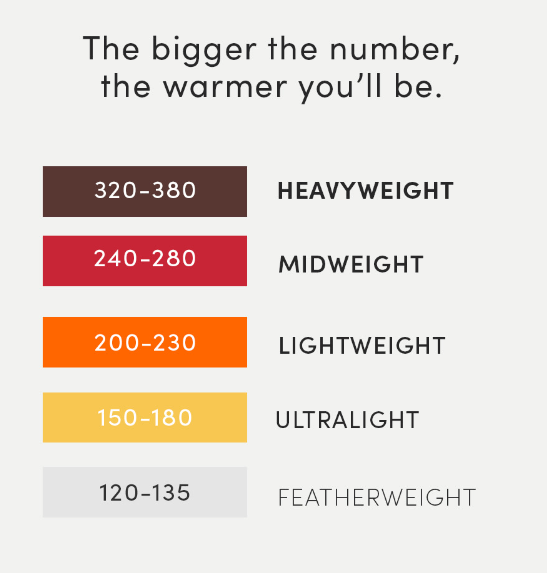
Fabric
Merino wool and synthetic fabrics, like polyester, nylon, polypropylene, or rayon (or a blend of the merino and synthetic) are the most common options for base layers, even in the summer. Additionally, silk and wool containing ceramic particles are two other choices for summer fabrics.
The reason for these fabric choices are that they will wick sweat away from the body, leaving you feeling more comfortable and dry. They also tend to resist odor.
Summer base layer fabrics are meant to pull sweat away from your body and dissipate the sweat over a large portion of your body to cool you down faster and make you more comfortable, which is different from winter base layers that want to wick sweat away and dry quickly to prevent heat loss.
Fit
All base layers are meant to fit snugly against your body to absorb sweat and prevent air from getting in between the fabric and your skin.
Some people might choose to have their base layers fit more loosely in the summer to increase air circulation. This decreases the ability of the fabric to wick sweat away from the body, but is still a better option than other fabrics (such as cotton).
For more information, check out my other article on how tight base layers should fit.
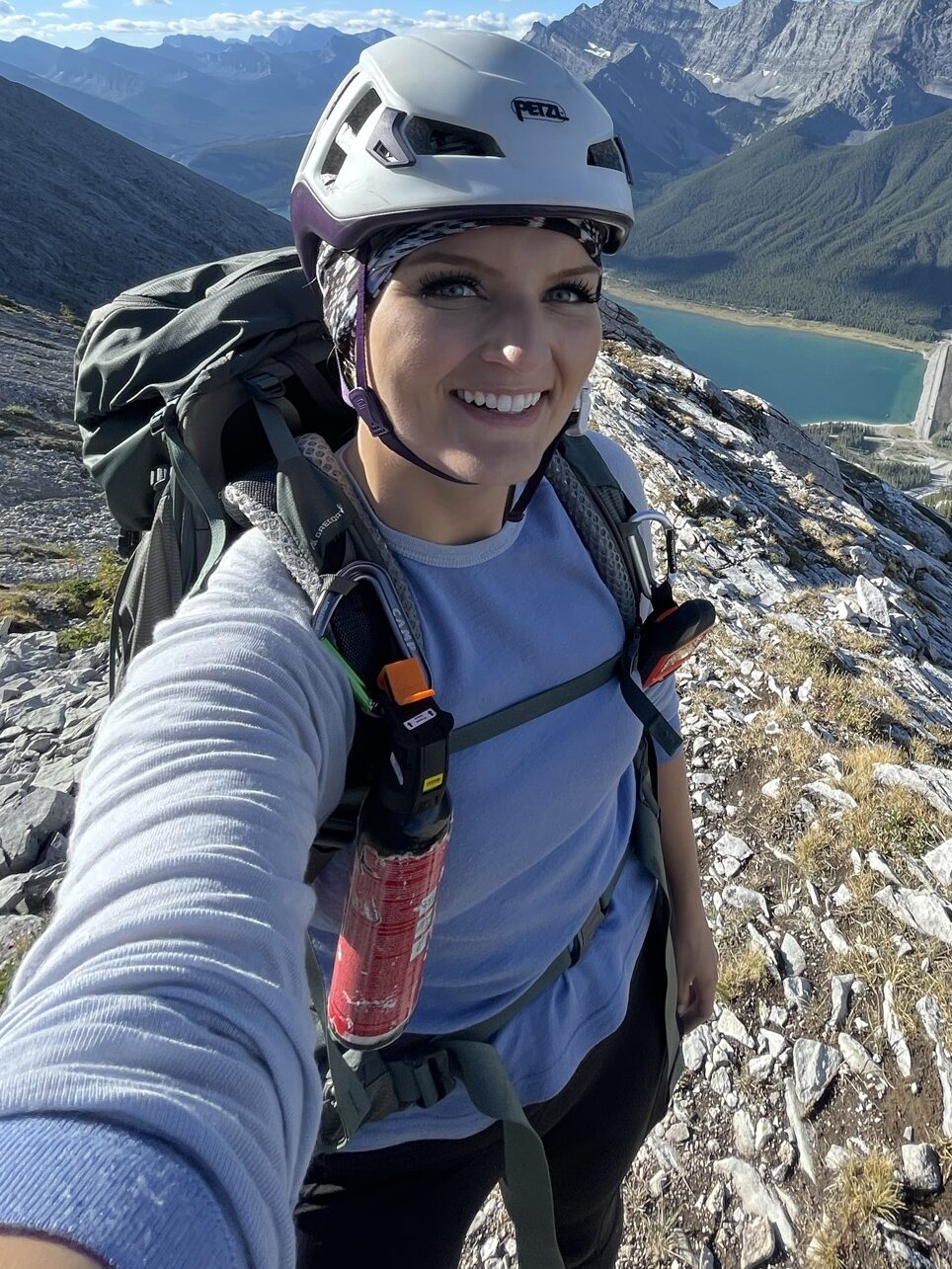
Base Layers and Thermoregulation
Will Base Layers Make Me Cold?
Base layers are not intended to cool you down or make you feel cold. They are meant to absorb sweat off your body and keep you from being moist and uncomfortable. In the winter, they are meant to prevent unintended heat loss.
Base layers that fit more loosely (meaning there is space and air pockets between the fabric and your skin) will cause you to lose body heat to the air pockets. This may make you feel cold when you stop exercising.
The best way to stay cool in the heat is by not wearing clothing beyond what is necessary. The more your skin is exposed to the environment, the more your body will lose its generated heat to the environment.
If you want a base layer that will cool you down, try a base layer with a loose fit. To keep warm, try a tighter-fitting base layer or a fabric with a heavier weight.
Do Base Layers Make You Sweat or Overheat?
Base layers may make you sweat or overheat if the fabric is too heavy for the weather. Choose lighter weight fabrics (<180) in the summer, and heavyweight fabrics in the frigid winter (>300).
If your base layer is making you too hot, you are likely wearing the wrong base layer for the weather.
If you find that you’re too warm, consider wearing a lighter-weight base layer, wearing a looser-fitting base layer, foregoing the base layer, or taking the layer off until your body cools down.
At What Temperature Should You Wear Base Layers?
You should consider wearing base layers at any temperature so long as the weight of the fabric is appropriate for the weather.
If you don’t want to wear base layers in the summer, start wearing base layers when the temperature drops below room temperature (20C or 68F) or is too cold for you to go without a jacket.
Wearing a base layer as the temperature starts dropping will wick sweat off your body and prevent you from getting cold when you stop exercising.
If you’re not wearing base layers in warm weather, choose midweight base layers (200-280) in cool weather, and heavyweight base layers in very cold weather (>300).

Thoughts?
Do you wear base layers in the summer? Why or why not? Is there something I missed? Drop a comment below and I’ll get back to you as soon as possible!
Happy trails!

